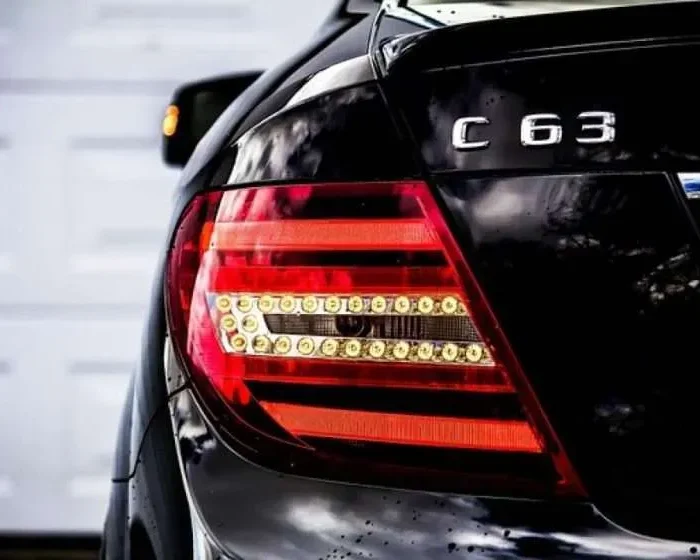Isn’t it just the worst when under the sunlight, your car’s paint reveals those annoying swirl marks, scratches, or oxidation? These imperfections can leave your vehicle looking worn out and neglected. But fear not—there’s a solution to restore that glossy finish you love: paint correction.
Paint correction is more than just a surface fix. It’s an artful, detailed process aimed at removing imperfections to bring out the best in your vehicle’s paint job. Whether you’re prepping your car for a show, trade-in, or simply want it to look its best, understanding paint correction is key.
In this post, we’ll walk you through the essentials of paint correction, highlighting what it involves, why it’s not the same as just a quick polish, and why it might make perfect sense for your beloved vehicle. Get ready to delve deep into the process that can take your car from drab to fab!
What is Paint Correction and Why Do You Need It?
Paint correction is a meticulous process of restoring and rejuvenating a vehicle’s paintwork. It involves the careful removal of surface imperfections, such as swirl marks, scratches, oxidation, and other blemishes that detract from a car’s overall appearance. But it’s not just about aesthetics; it also enhances the longevity of your paint finish.
The Secret to a Flawless Finish
Unlike a simple wash or wax, paint correction uses specialized tools and compounds to safely buff away paint flaws. These imperfections often arise from normal wear and tear, poor washing methods, or environmental factors. The goal is to restore the surface to its original, smooth state without compromising the integrity of the paint.
So why might you need paint correction? If you’re passionate about your car’s appearance, it’s a must. Whether you’re planning to attend a car show, increase resale value, or just enjoy the pride of having a sleek, shiny ride, paint correction can make a world of difference. It’s like a facelift for your car, ensuring it looks its very best.
Paint correction is about more than just visual appeal. By removing those pesky imperfections, it also helps in maintaining the overall health of your vehicle’s exterior, protecting the paint from further damage and wear.
Key Steps Involved in the Paint Correction Process
Getting your car’s paint looking flawless involves a series of detailed steps. Let’s break it down so you know what to expect.
The process kicks off with a thorough wash using specialized automotive shampoos to remove dirt and grime. This step is crucial as it prevents any surface debris from causing further scratches during the correction.
Decontamination and Inspection
Next up is decontamination. This typically involves using clay bars to remove bonded contaminants like tar or industrial fallout that regular washing can’t eliminate. With a smooth surface achieved, an inspection is conducted to assess the depth and nature of imperfections.
Now, the actual correction begins. Technicians use an assortment of polishing compounds and machines tailored to the severity of the paint imperfections. This stage might include several passes of different grades of polish to refine the surface.
Finishing Touches
Finally, finishing polish is applied to bring out a high gloss and ensure a swirl-free finish. To protect all the hard work, the last step involves sealing the paint with a protective layer, like a wax or ceramic coating, to guard against future damage and retain that lustrous shine.
In the end, the effort put into these meticulous steps results in a car that will turn heads on any street.
Tools and Products Required for Effective Paint Correction
Embarking on paint correction requires a well-stocked toolkit, each item playing a vital role in achieving an impeccable finish.
First, let’s talk about the machines. A dual-action polisher is the star of the show, offering the right balance of power and safety for both beginners and pros. It’s perfect for effectively removing defects without risking damage to the paint.
Then, there’s the selection of polishing pads. They come in various materials and grades, from cutting to finishing, allowing you to tackle different levels of correction with finesse. Each pad works in harmony with specific compound types to optimize results.
The Arsenal of Compounds and Polishes
You’ll also need a range of polishing compounds. These products vary from heavy-cut to fine polishes, each designed to treat specific degrees of paint imperfections. Starting with a cutting compound and working down to a finer polish typically yields the best results.
To ensure every nook and cranny is flawless, handy tools like detailing clay bars, microfiber cloths, and pad brushes are indispensable. And don’t overlook those protective products like waxes or ceramic coatings—they seal the deal by shielding your newly corrected paint against future elements.
Having the right gear not only makes paint correction more manageable but elevates the quality of your finished work significantly.
Common Mistakes to Avoid During Paint Correction
Paint correction, while transformative, can easily go awry without the right approach. One common blunder is skipping the thorough wash and decontamination stage. Neglecting this can result in dragging dirt across the surface, causing even more scratches and damage.
Using the wrong pad or compound is another frequent mistake. Choosing products that are too aggressive for the task can remove more paint layers than necessary, risking irreversible damage. Always match the pad and product to the severity of the defects.
Speaking of aggression, a heavy hand on the polisher is a big no-no. Applying too much pressure can lead to holograms or excessive heat build-up, potentially harming the clear coat. Let the machine do the work, guiding it gently and consistently over the surface.
Another pitfall is neglecting to test on a small area first. Diving straight in without understanding how the paint will react to particular products or techniques might lead to less-than-ideal results. A cautious test patch can save a lot of heartache.
Finally, don’t overlook proper pad maintenance. Dirty pads can introduce new scratches. Clean them frequently during the process to ensure they perform effectively and safely. Avoiding these common mishaps will help ensure your paint correction project is a shining success.
Understanding the Difference Between Paint Correction and Paint Protection
Paint correction and paint protection might sound similar, but they serve distinct purposes in the car detailing world. Understanding these differences is crucial for making informed decisions about your vehicle’s care.
Paint correction focuses on restoring the paint’s original condition. It’s about removing imperfections like swirl marks, scratches, and oxidation, bringing back the vehicle’s pristine look. It involves the use of specialized tools and compounds to safely polish away those blemishes.
On the other hand, paint protection is all about preserving the integrity and look of the corrected paintwork. This step involves applying a protective coating, such as wax, sealant, or ceramic coating, to shield the surface from environmental factors like UV rays, bird droppings, and road grime. Think of it as an invisible armor against future damage.
While paint correction is the remedy, paint protection is the preventive measure. They are complementary processes—correcting paint when needed and protecting it continually ensures your car maintains that show-stopping sparkle for years to come. Embracing both can help keep your investment looking its best and extend the lifespan of your car’s exterior finish.
Tips for Maintaining the Results of Paint Correction
Congratulations, your car looks stunning after a thorough paint correction! Now, the key is to keep it that way with some simple but effective maintenance strategies.
Choose the right washing techniques to prevent reintroducing those dreaded swirl marks and scratches. Opt for a two-bucket method—one for soapy water and another for rinsing. This reduces the chance of contaminating the wash mitt with dirt that could mar the surface.
The Importance of Gentle Products
Invest in quality microfiber cloths and wash mitts for gentle cleaning. Regularly swap them out to avoid dirt build-up. Equally important is selecting pH-balanced car shampoos that clean without stripping away protective layers.
Frequent waxing or a periodic ceramic coating application will enhance protection, keeping water and contaminants at bay. These layers provide a slick barrier, making it difficult for dirt and grime to adhere in the first place.
Lastly, be mindful of where you park. Whenever possible, choose shaded or covered areas to protect your car from harsh sun exposure and falling debris. Also, keep an eye out for bird droppings or tree sap—clean them off promptly to prevent staining.
By incorporating these maintenance tips into your routine, you can enjoy that fresh-from-the-shop shine much longer and make the most of your paint correction investment.
The Bottom Line: Achieving Professional Results with Paint Correction
In the grand spectrum of car care, paint correction stands out as a transformative process that can restore your vehicle to its visual glory. Whether you’re facing scratches, swirl marks, or oxidation, this method provides a solution that many quick fixes simply can’t match. But it’s not just about addressing existing damage; it’s about elevating your car’s aesthetic to a professional level.
Employing the right tools and techniques is crucial. By understanding each step—from decontamination to the final polish—you’re better equipped to achieve results that rival those of seasoned professionals. Remember, patience and precision are your best allies here. Rushing through or skipping steps can easily lead to less-than-optimal outcomes.
What’s more, maintaining these results requires a proactive approach. Consistent care, such as gentle washing and routine applications of protective products, will help extend the lifespan of your paint correction efforts. It’s an ongoing commitment to ensure that your car continues to dazzle.
Ultimately, investing time and effort into understanding paint correction not only enhances your car’s appeal but also contributes to its overall value. While the process may seem daunting at first, the rewarding gleam of your car’s surface is worth every minute spent. In essence, mastering paint correction opens up a whole new avenue of pride and satisfaction in vehicle ownership. With these insights, you’re now prepared to tackle paint correction confidently, whether you decide to try it yourself or seek help from a professional.




